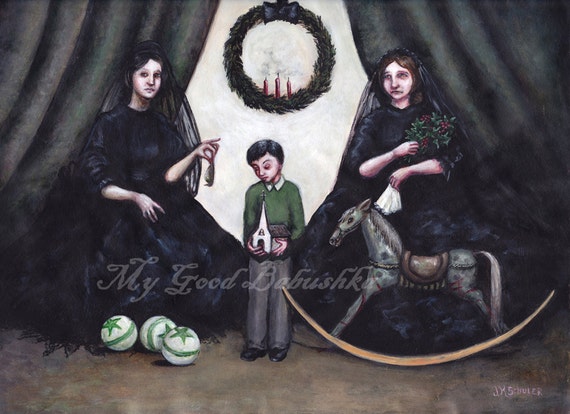The Wren
A peculiar custom on the Ilse of Man on Christmas Eve (probably the 16th-18th century) has the people rambling about all night until midnight when they have prayers then go out to hunt a wren. They kill a wren and bear it back to the parish church to bury it with dirges and great solemnity. After that, Christmas begins.
People of the Isle of man hunted the wren because of a myth of a siren who used to plague the land and men into the sea. A knight caught the siren who then changed herself into a wren. Every year she must take the form of a wren and be destroyed by human hands. The feathers of these ritualistically murdered wrens are charms against shipwreck. The dead wren is paraded about on a pole. Sometimes boys take the dead wren door to door caroling and dole out the feathers for money.
Sometimes, the wren is hunted on St. Stephen's Day because of the myth that St. Stephen was about to escape his captivity when a wren woke up the prison guard. So the wren must share in St. Stephen's martyrdom.

I made a painting involving all the lore revolving around St. Stephen.
St. Stephen was known as the patron saint of widows, so he is flanked by two women in Victorian mourning dresses. At the feet of the woman on the left sit three balls. St. Stephen is often depicted with three stones to indicate that he was put to death by stoning. Here the three balls stand in for the three stones. The widow on the left is also holding a dead wren. According to lore, St. Stephen was about to escape his captivity when a wren woke up his captors. Since that time, a wren was caught and killed each St. Stephen's Day because it must now take a part of his martyrdom.
St. Stephen is often depicted as a young man holding a miniature church. Here he is depicted as a child, also holding a church in miniature. To the right of St.Stephen is a rocking horse with bleeding legs. St. Stephen's Day, in medieval through Victorian times, was a day to bleed horses in order to preserve their health in the coming year.
Ancient Welsh custom, discontinued in the 19th century, included the "holming" (beating or slashing with holly branches) of late risers and female servants. My widow on the right is holding a branch of holly to remind us of this forgotten tradition.
St. Stephen's Day is the day after Christmas, that is why the candles are just put out in the wreath at the center of the composition.
